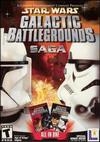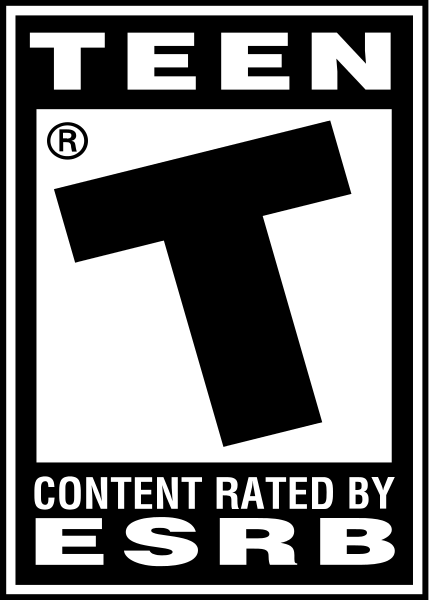Existing User Log In
New User Registration
Register for a free account to gain full access to the VGChartz Network and join our thriving community.





America - Front


America - Back


LucasArts
Strategy
 01/01/02 LucasArts
01/01/02 LucasArts  (Add Date)
(Add Date) 08/13/02 LucasArts
08/13/02 LucasArts
| Owners: | 10 | |
| Favorite: | 2 | |
| Tracked: | 0 | |
| Wishlist: | 0 | |
| Now Playing: | 0 | |
06th Apr 2020 | 1,023 views
Game: Star Wars: Galactic Battlegrounds Saga.
Platform: PC.
Year: 2002.
Developer: Ensemble Studios/LucasArts
Genre: RTS.

Licensed games have had quite an irregular story to them. For the most part, licensed games have been described as quick cash-ins, rarely with any innovation or quality of their own, more focused on delivering a product as a tie-in to the real thing that being a quality game on its own. And, to be fair, it is not an unwarranted reputation. The most famous licensed game of all time, E.T. The Extraterrestrial (1982) is usually blamed for the entire death of the industry in North America before the release of the Nintendo Entertainment System. From then on, some of the worst games of all time have been tie-ins to other forms of entertainment, usually movies or TV shows. And while nowadays they seem to have disappeared for the most part, they still have a release here and there, especially in the mobile market. While it would be unfair to say all license games are bad, their circumstances usually don’t allow for anything else, and the sheer amount of shovelware in the form of tie-in games makes this a common criticism (just look at consoles like the PS2, the Wii or the DS, and look for the worst rated games on those systems, and see how many of them are movie or TV licensed games). For the most part, this licensed games have followed a rather simple structure: to save time and costs, it’s more efficient to take a game and use it as the base for the next product. This take the form of clones, but many companies would go a step forward and just license their assets, engine and other parts of their software to make it as close of a reskin as possible. Oddly enough, those usually fare better than the ones that merely use a template, for the simple fact that, if they are re-skinning a good game, the end result must inherit some of that quality. This is where we look at games such as Star Wars: Galactic Battlegrounds.
Star Wars: Galactic Battlegrounds is an RTS made by Ensemble Studios and LucasArts, which utilizes the engine and gameplay of the acclaimed Age of Empires II and re-skins it into a Star Wars game. The first part of the game released in 2001, whereas the Clone Campaigns expansion released in 2002, closely tied to the movie Attack of the Clones. That year, the game was sold as a complete package with the name of Star Wars: Galactic Battlegrounds Saga, which include both the base game and the expansion. This is the version that is on sale on modern digital storefronts, and thus is the one I’ll be reviewing.
Also, before starting this review, a bit of warning. This game is old, almost twenty years old by the time of this review, and as such, it has a lot of problems running on modern devices. The compatibility problems are so grave, in fact, that the game straight up doesn’t work right of the bat, needing quite a lot of patching and modifying from fan sources. Once again, this is an old game put on Steam and GoG that just doesn’t work, and it really needs to stop. If companies are interested in selling old games, they need to at least make sure it runs on modern systems. Hell, the latest GoG release of Submarine Titans works fine on modern computers, and that is an obscure title. This has the Star Wars license, there should have been at least a minimum effort to release it in proper conditions. There were a couple of visual glitches I’ve seen that, from what I’ve read, either comes from the original state of the game, or from the patch, so I won’t mention them, but they are there nonetheless.
Star Wars: Galactic Battlegrounds is a very straightforward proposition. Do you like Age of Empires II? Do you like Star Wars? Then this is the game for you. The game is a reskin of massive proportions, and basically all major mechanics and tools present on the original Age of Empires II is present here as well. The age advances are now tech tree advances, the resources have a different name but are otherwise the same, the fog of war works identically, you still use villagers to gather resources and build stuff… The only major differences here are the combat, which needed to be adjusted to take into account the new setting. This adjustment is the cause of most of the game’s difference with its source material. First off, Age of Empires II is a medieval setting, in which melee combat is the main form of fighting. There are arrows, projectile weapons, cannons… but overall, most of the fighting is close quarters combat. In the Star Wars setting, however, it is the opposite. There are all kinds of laser and plasma weapons, blasters and other similar guns around, and they make for the bulk of the units in Star Wars: Galactic Battlegrounds. Though, they still have a lot of melee based units around, it’s not just ranged combat. Mounted units, pummels, jedi and sith units, many unique civilization units… They are quite apt at close quarters combat, and that makes for a more interesting mix of units and strategies that one would first think. The other important difference is the existence of flying units, something that’s completely absent on Age of Empires II. This element had the potential of being game breaking, but they’ve actually managed to implement it well enough within the confines of the game balance. The downside is that flyers are very weak and fragile in general, and it’s rather easy to amass a cheap force of anti-aerial units to keep them at bay. The only flying units that threaten to break the equilibrium of the game are the T-47 air-speeders, which are quite durable for flyers, and the colossal Air Cruiser, massive flying artillery pieces that can wreck anything they hit, but they are slow as molasses and prohibitively expensive. Hell, they even had the good sense of putting the flying units at a later point of the tech tree, so it wouldn’t become a zerg rush nightmare. Other important element to take into account is the option of energy shields, which double the HP of many units and structures inside of a particular radio, perfect for defensive positions, but they are otherwise limited to access to power cells (which are also needed to speed up tech development in general). Overall, the combat has been balanced quite well, with the one exception of the jedi/sith, which is a strong melee unit that needs a lot of concentrated fire to take down and can convert other units (taking the role of the AoE Monk here), so massing them up, while expensive, is a threatening prospect. The only direct counter, other than air units, are bounty hunters, which are only good against jedi/sith, and thus their overspecialization makes them quite unusable otherwise.
The economy is… pretty much identical to AoE II. The only difference I can think of is that you can keep up cattle inside of specialized buildings to gather food from them over time, which actually makes cattle useful beyond the first stages of the game. Otherwise, if you know how to gather resources, build stuff and keep a basic economy in any AoE game, you know how to do it here.
There are eight civilizations in the game, all from either the original trilogy or from the first two movies of the prequel trilogy: The Galactic Empire, the Rebel Alliance, the Wookies, the Gungans, the Royal Naboo, the Trade Federation, and the two from the Clone Campaigns, the Republic and the CIS (or the Confederacy). They all have their strengths and their weaknesses to keep a decent balance, but oddly enough, the one civilization that I feel breaks the balance of the game is the gungans. First, heir units are mostly biological, so most things can be healed up with a medic instead of using workers to repair, keeping them from work and wasting resources. This means they can heal up absolutely everything, and quite fast if they have enough medics. Second, they can build structures underwater, which is something unique to them and grants them an immense advantage on maps with a lot of water. Third, their buildings heal themselves, which is self-explanatory. Fourth, their troopers, while weak (and not by much, mind you), have one of the longest, if not the longest, range in the game, giving them a massive advantage in early hit and run strategies. And fifth, their unique unit is the one that can generate a portable energy shield around your allies, which, if combined with the appropriate troops and medics, means they are terribly difficult to take down. The only real drawback to the gungans is that their airpower is below other civilizations, it’s slower to create and it’s more expensive, but still. The rest have their strengths and weaknesses, but there is no doubt that the benefits of the gungans outweigh the other civilizations by far. Why exactly did they choose this, I’m not sure, but this means there’s no real counter to them, other than just battering them before they can develop most of their special stuff. Also, if you’ve seen the movies, the Confederacy and the Trade Federation should be the same faction, due to the Trade Federation being one of the many entities that formed the CIS back in the Clone Wars. However, this is not possible in the game, and as such, most Confederacy units look more like the bugs in Geonosis than the robots from the movies, leaving only a couple of robot examples there, which is disconcerting. Understandable due to wanting to make unique models for each civilization, but still somewhat confusing.
The campaigns of the game are rather simple and straightforward. There are seven plus a fully tutorial one, and are there to teach you the basics of the game with each of the civilizations. In fact, many levels are either identical to levels of the campaigns of Age of Empires II, or so simple there is little point in completing them, even on the higher difficulties. On the other hand, there are a couple of levels that probably have little to no testing to them, since the way they want you to beat the level is impossible, thus forcing you to a slow slog of a game, where you’ll have to use save scumming over and over again. And even so, it’s more due to the design of the level and your own resources rather than enemy strategy. The enemy AI is, for the most part, quite dumb, and has no response to just spamming air cruisers alongside anti-air units. Also, in the levels where you have to keep focus on small squads, the enemy will usually not focus in an efficient way, leaving them open to counterattack over and over again. The levels have, just like Age of Empires, a narrated opening and an ending, but in here, you just know they did not have the budget for the actual actors. The narrators sound nothing alike, which is distracting both in this exposition dumps and in the actual levels. Also, they barely wrote anything of substance at all. Some of the after-battle narration can be summed up as “Congratulations! You won!”, and that’s it. A rather severe disappointment, considering how interesting and challenging the campaigns in Age of Empires II were.
Multiplayer is dead, of course, you’ll need third party services to try and get a match going. This is something that was going to be inevitable, considering the age of the game, but it’s nonetheless sad to see.
The game also has a map editor and a database. The map editor is identical to the Age of Empires II, so not much to talk about there. The database shows information about the Star Wars mythos and universe pre-Disney, though it’s limited to information before 2002. It’s always a good detail to see this information, but I feel it should have been introduced naturally in the campaign levels.
Star Wars: Galactic Battlegrounds is a rather curious piece of software. It is pretty much Age of Empires II in form and function, but with a Star Wars coat of paint, which is good considering AoE II is one of the best games of all time. However, it feels the game was rushed to release in some aspects, which, combined to the fact that the game is pretty much a clone of AoE II, I’m not sure how much merit I can actually give it. With a stronger campaign and a couple more mechanics, not to mention support until at least the end of the prequel saga, it would have been something really special. As it is, it’s a good game, though it gets all of its strengths from the original came instead of its own merits.